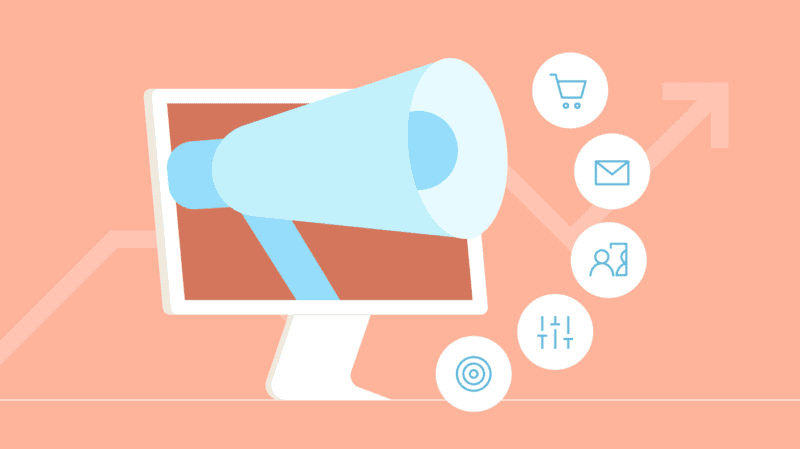Maximize the Value of Your Existing Campaign Management Tools

Legacy campaign management tools can’t keep up with today’s consumers. With complex customer journeys, multiple interactions and the volume of data required to enable customer experiences, leading brands are augmenting existing capabilities with agile and more comprehensive solutions.
In addition, with many organizations in the midst of a digital transformation journey, some are facing the dilemma of cutting costs in preparation for economic disruption or investing in customer experience, growth and retention.
Enterprises still leveraging legacy tools are forced to go into survival mode as opposed to focusing on transformation. With 86% of enterprises still reliant on at least one legacy tool and 37% fully dependent, the time is now to understand the impact of your current tools as well the benefits of offering a customer-centric experience and increasing customer lifetime value.
In our recent webinar — “Maximize the Value of Your Existing Tech Stack” — ActionIQ joined partner Munvo to discuss the challenges marketers are facing. We also discussed how marketers can streamline their existing stack by integrating a solution-based approach to drive incremental revenue and cost savings together with customer experience optimization.
Maximize the Value of Your Existing Campaign Management Tools
Challenges With Legacy Campaign Management Tools
Businesses are struggling with legacy and siloed channels with technologies perpetuating a deep divide between MarTech, AdTech and CRM solutions.
“[With legacy and siloed channels] it’s very hard to have the proper flexibility to design the audiences and to orchestrate campaigns to the relevant audiences,” said Edouard Servan-Schreiber, VP, Architecture at ActionIQ.
Oftentimes, these legacy tools have an inability for business users to access customer data, a lack of stable data to produce campaigns, and operational complexities which lead to a lack of flexibility to create market-relevant audiences.
“When something new comes up, the data is so brittle that it’s very hard to react to these new things,” added Servan-Schreiber. “Business users do not have direct access to data and oftentimes the data is stale by the time it reaches a production campaign.”
These challenges lead to inconsistent messaging across channels for the same customer and latency to adapt campaigns to market changes.
Legacy campaign management tools can significantly impact businesses and result in higher churn due to a lack of contextual and relevant communications, high costs because of manual processes and slow time to market due to long campaign cycles.
What Are the Options Going Forward?
Businesses have six options going forward to augment their legacy campaign tools and take their organization into the future.
Option one would be to go all-in with a marketing cloud:
- Pro: This can be a great option for those who have already invested in a marketing cloud as opposed to adopting a best-of-breed approach.
- Con: With this approach, it’s important to be wary of the integrations between the tools under the cloud’s umbrella as oftentimes these solutions have been acquired over time and don’t necessarily talk to each other.
Option two would be to lean in on your orchestration tool:
- Pro: This can be powerful in terms of your businesses core channels.
- Con: It can be difficult to scale to other channels and to gain accessibility to detailed customer data.
Option three would be to build a solution yourself:
- Pro: This can be an option for some organizations that are looking for a customized solution.
- Con: This can be painstaking to maintain and operate as this is outside of your core business and goals.
Option four would be to focus on data pipelines:
- Pro: This would solve data latency.
- Con: This solution would continue to push audiencing to each channel resulting in a disjointed customer experience.
Option five would be to re-invest in legacy campaign management tools:
- Pro: Ensure continuity with your teams and avoid any changes.
- Con: This will result in the same pain points of scale and flexibility.
Finally, we have option six – integrate a CX Hub:
“The CX Hub provides the scale and flexibility that is needed with direct access to business users to create a coherent customer experience,” said Servan-Schreiber.
“There’s no doubt that this requires some effort, not just technical effort, it requires changing the mindset and sometimes the organization of teams.”
Integrating a CX Hub can provide both scale and flexibility to enable a customer-centric approach but simultaneously requires both effort and the flexibility to reimagine your organization’s existing approach.
Organizational Benefits of the CX Hub
Brands should adopt a solution that works best for their current and future goals.
The AIQ CX Hub is a modular approach that can grow with your organization and adapt to your existing technology and source of truth to execute audience hypersegmentation, manage sophisticated customer journeys and engage customers in real time.
With economic uncertainty on the horizon paired with customer expectations reaching new heights, it’s key to maximize the value of your stack and strategize for the future.
Oftentimes, businesses are paying for legacy tools with redundant capabilities. Shifting to a smart hub approach allows you to centralize capabilities into a single hub to unify and democratize data as well as orchestrate customer-centric experiences.
“You can expect savings in technology,” said Servan-Schreiber. “Redundant tools that are in place will no longer be necessary. You can take them out.”
Paid media is also an easy place to waste money. A CX Hub enables your organization to reduce media spend by leveraging first-party data for acquisition and retargeting. In addition, empowering your business teams to infuse data, testing, and measurement into their existing routines, allows organizations to keep tasks in-house, automate manual tasks and reduce reliance on IT.
Finally, integrating a CX Hub enables business users to understand where customers are in the existing customer lifecycle and which ones are at risk of abandoning your brand. With those insights, you can appropriately deploy retention-focused experiences.
The time is now to enhance your existing technology investments and determine a strategy going forward to empower your organization to manage data governance, costs as well as performance, to drive growth through experiences.
Learn More About Customer Experience Strategy
Download our guide, How to Save Money & Retain Customers With Your CX Strategy, to discover more about the benefits of an agile and adaptable approach while providing extraordinary customer experiences.





